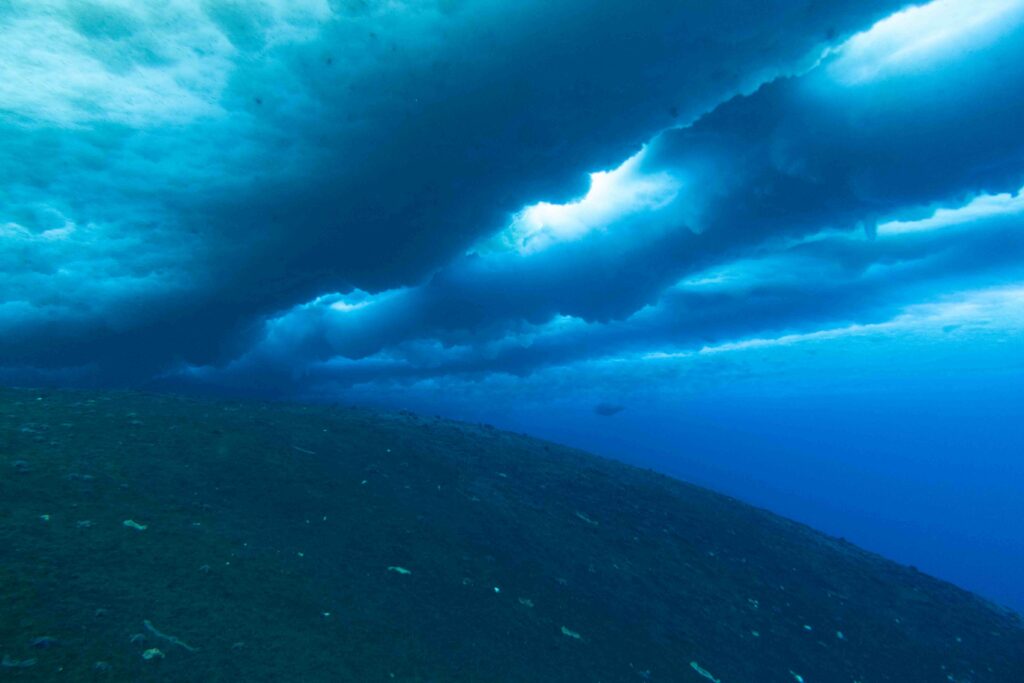While conducting our research, we dive at a number of different spots in the Ross Sea. The site that we most commonly dive is known as Cinder Cones Seep. Cinder Cones Seep is particularly special because it was observed to begin seeping methane in 2011. This was a first for Antarctica! There were previous studies suggesting that the Antarctic region may have a large amount of methane reserves, but no eyes had ever been laid on an active seep. Being able to study this site will tell us a huge amount about the methane cycle in both Antarctica and the earth as a whole.

The white mats in the above picture are microbial mats, or biofilms filled with bacteria and archaea that are associated with the seeping methane. Photo credit: Andrew Thurber
Above the ice, the Cinder Cones Seep area has a lot of wind funneled onto it, causing most of the snow to blow away. The lack of snow on top of the ice makes the dive site extremely light, and when diving, we don’t even have to use lights! This is in sharp contrast to the other sites that I’ve visited here.

Andrew conducts a transect along the seep, filming the animals near the measuring tape to later be counted and analyzed.
The site has sea stars, nemertean worms, and anemones as far as the eye can see. There are so many of them everywhere that they’re often on top of each other.

A fish sits on top of a sea star, which sits on top of a nemertean worm, which sits on top of a bed of anemones!
Every time I dive at Cinder Cones, I get excited thinking about the implications of our research and the importance of learning more about this system. The samples collected from this site have been and will be a huge part of my research in the coming years, and I couldn’t be happier to see it with my own eyes and take samples of it with my own hands.

A seal swims towards a crack in the sea ice at Cinder Cones Seep, providing an easy access point for the marine mammals and incredible overhead features for us

Divers finishing a dive and heading up the hole.


Hello, thanks for the article! I love sea life, and it’s really cool that there are still people who are passionate about it and explore the seas and oceans. Usually now most people work in offices, but it is rare to meet those who perform such a physical and nice work. Starfish are so cool! I really like the way they look. Very cute creatures, cool photo! The fish really fits in there hahaha. Thank you for sharing this, it is always interesting to know whats going on there in the sealife. How many dives in general have you taken?